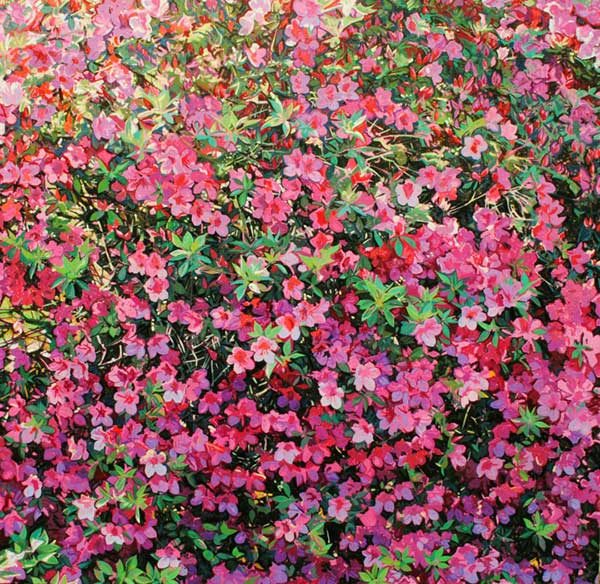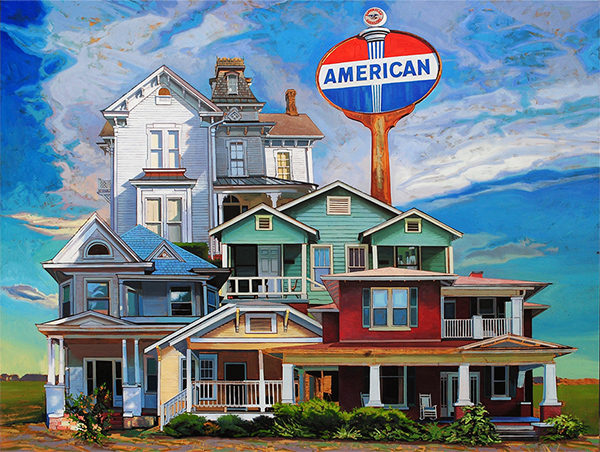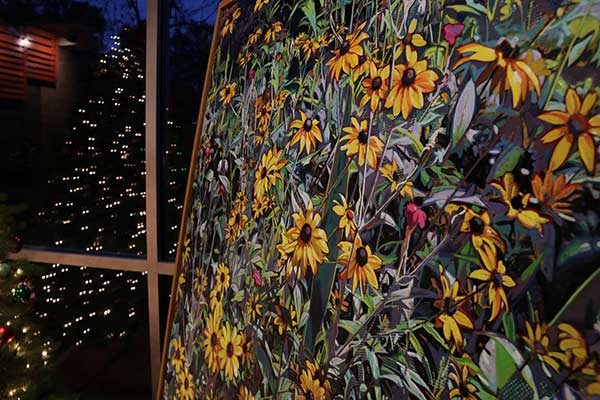
Charlie Buckley: From Bob Ross to MAC Fellowship Recipient
Charlie Buckley is a Tupelo-based painter who has primarily worked in the commercial art world, creating and selling his paintings on a full-time basis for nearly a decade. He is a 2019 MAC Artist Fellowship Recipient and is currently represented by galleries in Jackson, Oxford and Nashville. He also maintains a steady stream of commission work.
Buckley has been interested in the creative process since childhood. “I was always into drawing, painting, models and building things,” he remembers. Growing up in Newton, Miss., he first became interested in visual art by watching Bob Ross’ The Joy of Painting on Mississippi Public Broadcasting and began taking art lessons while in grade school. Buckley moved with his family to Desoto County when he was in high school. While there, he took an AP art class his senior year of high school that introduced him to a number of advanced concepts and helped prepare him for studying art at the University of Mississippi.
As a college student, he participated in departmental sales where he and other students displayed and sold their work to the Oxford community. Some sales he made at these events led to Buckley landing commissions while he was still a student. “By the time I graduated, I knew the basics of how to talk to clients, how to understand what they want, and how to pursue that vision for them,” he recalls. After graduating, Buckley stayed in Oxford and spent the next few years pursuing painting full-time through developing his commission work.

“Wisteria” by Charlie Buckley
Although he built up a steady business in Oxford, Buckley felt the need to advance his artistic abilities. He left the state and completed the MFA program at Miami University in Oxford, Ohio. After finishing, Buckley and his wife returned to Mississippi and settled in Tupelo. He initially taught art at the college level, but became eager to paint full-time. However, he was reluctant to make the change due to the economic recession at the time.
“I told myself once I can see some movement in the market, once I could feel comfortable, I was going to stop teaching,” he remembers. “If things had stayed bad for one more year, I would have stayed in academia.”
He left his teaching job in 2011 and has been a working full-time artist since.
At first glance, Buckley’s paintings have a high degree of realism, but a closer look reveals more abstraction and detail.

“Azaleas” by Charlie Buckley
“As a painter, that’s my goal. I don’t want to be a photo-realist,” he explains. “I want my paintings to look real from far away, and as you approach them, I want them to totally break down into just shape, color, pattern, and texture.”
Buckley includes many small items, like half-tone dots, bar code images and silk screened patterns in his work. “I want the viewer to come in and search through it to find little things in the paintings.”
While he’s always mindful about what type of work will draw interest in the galleries, Buckley still finds ways to grapple with issues in his work. His recent “Stacked Houses” series of paintings came as a result of his concerns over climate change. After a tornado tore through his neighborhood in Tupelo, Buckley watched damaged houses being re-built and began ruminating on the coming changes to home construction. “This is something we might have to do in the future . . . just to seek higher ground,” Buckley says. The “Stacked Houses” consider how both the environment and social class will affect the concept of home.

“Stacked Houses” by Charlie Buckley
Buckley has been a MAC grantee throughout his career and believes that they made a crucial difference in his trajectory as an artist. In 2006 he received an Artist Minigrant, which supported his work on a piece that became a permanent installation at the Powerhouse Art Center in Oxford.
“It was only $500, but when I was 23 years old, $500 was everything,” he remembers. “That work got me into graduate school, so the Minigrant was very helpful.”
In 2011 Buckley received his first Artist Fellowship award from MAC, which he says helped give him the confidence to quit his teaching job and begin making work full-time. His current Artist Fellowship allowed him to stretch out in in new directions. “Because I got the MAC Fellowship, I told myself for this [next] show, I’m going to make work that I wouldn’t otherwise make.”

“Black Eyed Susans” by Charlie Buckley on display at Mississippi Library Commission’s December 2018 exhibit of MAC Fellowship Recipients. Photo credit: Susan Liles
This past July, MAC awarded grants to 14 Mississippi artists through the Artist Fellowship Program. The grant program provides up to a $5,000 award to individual artists who demonstrate a high level of excellence in their work. This year’s recipients are from nine different communities and represent several different artistic genres, including photographers, writers, painters and musicians.
